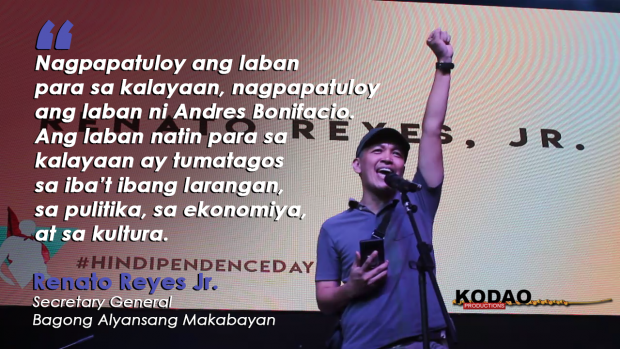Kung Bakit ko Naaalala si Ka Joma Habang Nanonood ng K-Drama*
Ni Joi Barrios
Tulad ng marami, ako’y nahumaling na rin
sa panonood ng K-drama.
Sunod-sunod bawat episode,
hanggang sa magwakas, ang seryeng palabas.
Ngunit ewan ko ba, kung bakit minsan,
kapag may linyang binibigkas ang tauhan,
ang naaalala, ay dili’t iba
kundi siya, ang dakilang si Ka Joma.
Tulad sa Crash Landing on You, halimbawa
kung saan, hindi halimaw
ang mga nasa sosyalistang bansa,
kundi tao din lamang.
At sa Dong Yi (pronounced Dong Ya)
nang sinabi ng bida, na ang mga alipin ay itinulak
sa hangganan, kung kaya’t nag-aklas.
O sa When Our Love Blooms:
dumaan man ang mga dekada,
ay hindi bumitiw ang aktibistang piyanista
sa ipinaglalaban ng mga manggagawa.
Katatapos ko lang ng Bridal Mask,
at habang tino-torture ang minor character,
malapit mang matigok ay sukat pang nangahas magsalita
na ang tunay na terorista,
ay ang mga nagnanakaw sa bayan.
At dito, sa Capital Scandal na ngayo’y sinusundan,
ganito ang usapan:
Tanong: Bakit ka pa nagbabasa ng tungkol sa sosyalismo at kasarinlan?
Ako, ang gusto ko lang ay ipagtanggol ang aking mga minamahal.
Sagot: Iyan mismo. Ganyan ang sosyalismo.
Ganyan ang pakikipaglaban para sa kasarinlan.
Natutunan namin sa iyo
ang maghangad na maging tulad ni Atorni Woo:
ano man ang kapansanan at pagkukulang,
ay nagsisikap pa ring mag-ambag
tungo sa pagkamit ng katarungan.
Maaalala ka, lagi’t lagi,
lalo namin na iyong mga tagahanga, at tagahanga ng K-drama.
Sa K-drama, naaalala ang batang ako (back to me ba?), na nagbabasa,
pinag-aaralan ang mga akda ni Ka Joma,
na noo’y ipinagbabawal,
kung kaya’t hindi nailalabas sa aklatan.
Yumao ka man, Tito Joe, aming Ka Joma,
ay hindi lilisan ang iyong pamana.
Maaalala ka sa bawat martsa, sa bawat labanan,
sa bawat sandali ng patuloy na paglilingkod sa masa.
Mananatili kang tanglaw ng aming pakikibaka.
*Nasulat para sa interpretasyon ni Bibeth Orteza sa tulong ng mga kasama ng kani-kanilang paboritong K-drama.





